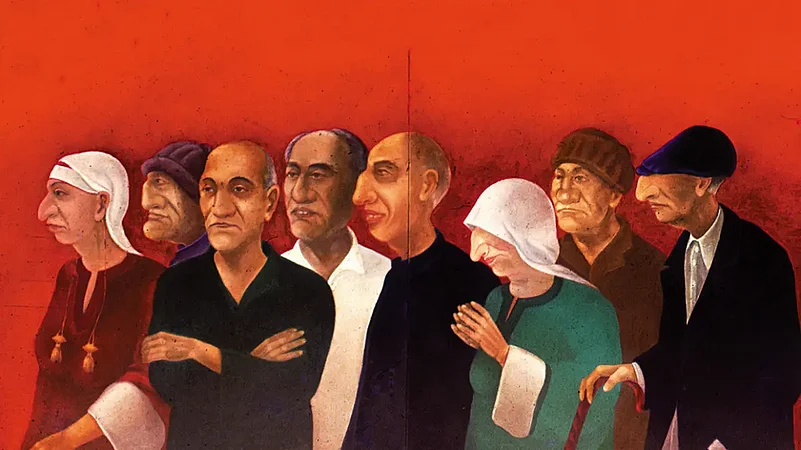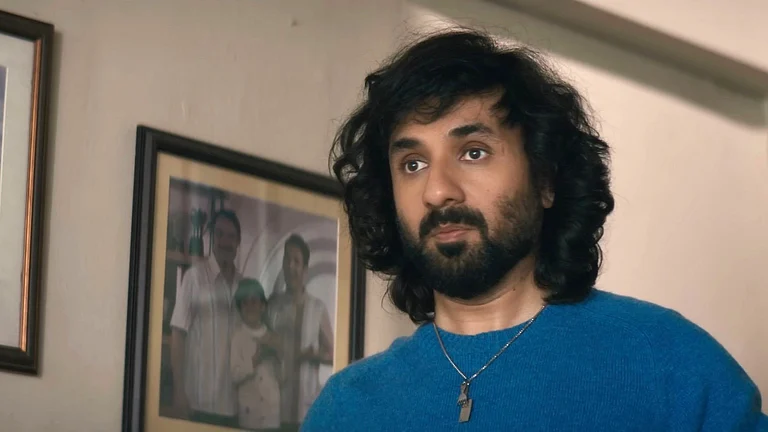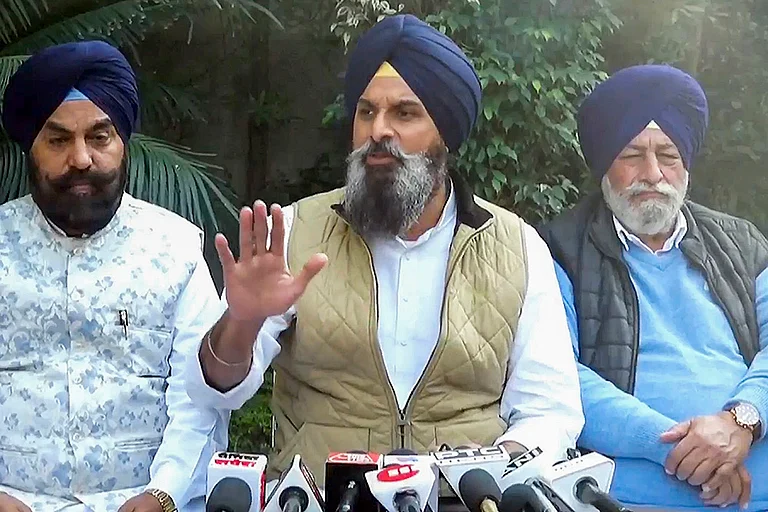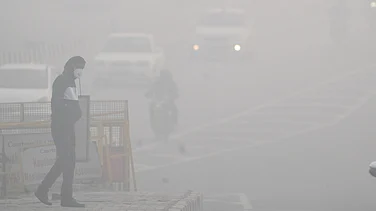Homelessness never made me untie my shoes. Metaphorically, it is like walking in the same pair of trousers I wore when I left Kashmir 32 years ago. I happen to be one among the many who left the Valley in the ’90s due to the political upsurge. I still get goosebumps when I remember that experience of fleeing in dark nights. I remained a wanderer. Art came to my rescue, which was a release as well as therapeutic. To begin with, I was agitated. The personal became political and I painted my felt experiences, mostly morbid images, on canvas and mounted my first large show in 1992 in New Delhi. It was presented by Ebrahim Alkazi. Most of it was about exodus, atrocities, and human rights violations. Soon after, I was invited to the United Nations at Geneva to present my experiences through visual language, but there were no takers back in India.
Art activism grew in me, and I tried various ways to tell the stories, address the homeland issues through public performances, build consciousness and confront the pain. What could be the role of an artist, I wondered? I focused on the expressions of refugees, their sufferings and the other layers which connected to the Kashmir situation in general—where Pandits lost their homes and Muslims lost their composite culture. My work on abandoned houses shows it all. Silence speaks volumes sometimes. When you paint the pain, you don’t see which community it belongs to. I continued the political language through various mediums—paintings, videos, photographs, sculptures, installations. I have addressed a range of subjects in the course of my artistic career, but exile remains my most fundamental preoccupation. I consistently used art to reflect my anguish at the situation in my home state. Making a human rights statement rather than a political one, I sought to highlight the turmoil that comes with separation from heritage, and to highlight the increasingly narrow space that exists for culture and art in the Valley. I am convinced that art, because of its universal nature, can play a significant role in the resolution of the Kashmir situation.
ALSO READ: Kashmir: This Isn’t A Postcard Series

I returned 15 years later to visit my ancestral home. Though my house was burnt down much earlier in ’93, and the property changed hands—it is now a shopping complex—I looked for other houses of friends and relatives. The first time I encountered these abandoned houses, frozen in silence, it became clear what they meant to me—my association with the place, the wood and brick houses, porches called dubb where we used to have family gatherings for morning tea, kahwa chai. I wandered through the lanes and bylanes as the memories came back like a deluge. And they also made me think, questions on how to address these houses changing hands, their encroachment and their decay. I start scribbling and drawing in my sketchbook. I thought of painting these houses, and took some casual photographs for reference. But I realised soon that painting would mean my interpretation of these structures which stand on their own, making no demand for intervention or manipulation. The only medium I felt like taking refuge with is photography, which might justify the house that stands still like a portrait of the time. Every medium has limitations and possibilities. For me, it was a shift from my painting to a new medium which involves gadgetry and technical abilities to get the picture right.
My periodic visits took me to these sites to document/photograph these houses which were familiar to me with lots of memories attached. The task was doubly complicated—how to restrain from inflating my own sufferings, and how not to be overwhelmed by the memories of a cultural lifestyle that has been irretrievably lost. But nevertheless, I kept going back in different seasons to document the body of work. The most fascinating period was the winter, the gloomy morning hours, when the clouds worked as a filter. The demand of wide angles became unavoidable to frame the houses, some of which are gigantic, where space around is too little. These photographs are ‘as it is’, taken in that moment of time, no digital manipulation or computer-generated effects. These are the plain truth, printed on archival paper.

These abandoned houses, having vernacular architecture of medieval times, need to be declared as heritage so that one can save the cultural history of the times. They are decaying fast, some of them turning into glass-and-steel malls and shopping complexes. I realise it is a tremendous task and needs a Herculean effort and will on the part of the government, which, given the various dynamics at play, may not be easy to come by. To add salt to the wounds, nature dealt its own blow with massive floods never seen before in the valley, rendering millions homeless. The ravaging floods of September 2014 have inflicted unprecedented loss of life and property in Kashmir. A large number of houses which needed protection were swept away by floods.
My project, Serenity of Desolation, displayed at the Indian Art Summit 2015, showcased fallen heritage houses for different reasons—social, political or natural calamity. Another series, Shrapnel, was a result of being caught between security forces and stone-pelters way back in 2010 in downtown Srinagar. I try to go back to connect with the new generation of Kashmir, born post-1990s, from both communities. They may not have known what the culture of the place was, but got them engaged through various felt expressions which translated into the project titled A Place for Repose which was displayed at the Kochi Muzris Biennale in 2018-19.
ALSO READ: Routes Of Grief: Two Translations
There is a lot of art reflecting the uncertain times. Visual artists have expressed their concerns, experiences, engagements with such situations—war, epidemic, nature’s fury, conflict. I believe an artist can work as a catalyst between communities for nation-building. Art practices can archive the reality of time, change the mood and drive the attention to build consciousness towards the right path. Films remain a powerful medium and much can be achieved if used sensibly. I feel Bollywood needs to have more films on such realities of the times. Issues like Partition, migration, displacement need to be addressed in a way that can lead to solutions, and not widen the divide.
Can art practices translate into reverse migration?
(This appeared in the print edition as "In Search of Home")
(Views expressed are personal)
ALSO READ
Veer Munshi is a visual artist based in Gurgaon





















